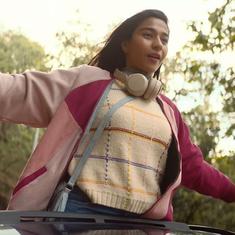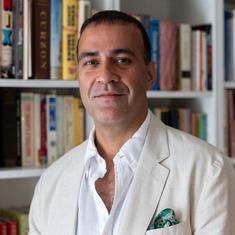A couple of days ahead of the El Clasico – club football’s most storied rivalry – the tall cranes outside the famous Santiago Bernabeu are unmissable. The stadium is undergoing a major renovation, and the silence inside the otherwise empty stadium is interspersed with loud banging of the drums even as the club was preparing to host the biggest match of the year.
But on Sunday, ahead of the match, one of the 75m tall structures have found another use: a place to put cameras and transmitters for the helicopter to add a few special elements to broadcast the highly-anticipated clash between two football giants.
“As you can imagine, this is one of the most important matches – if it’s not the most important match of the year,” Kasia Humska, producer from MediaPro, said speaking to reporters from the mobile broadcast area, three hours before kick-off on Sunday.
“The Clasico is much bigger than the regular match at the Santiago Bernabeu when we have around 140 people working... right now we have more than 420 people; which is triple the staffing.”
El Clasico at the Santiago Bernabeu: When Real Madrid pulled together to punish a passive Barcelona
The mobile broadcast unit is set up near the crane close to Tower C, in a small area packed with 35 vans, seven of which are the bigger Outside Broadcasting units.
“We have 32 cameras in total for the broadcast (not including 38 fixed cameras fitted around the stadium for the 360 degrees replay feature) and few of those are special cameras. The helicopter has one of them. We’ve situated one beauty cam on this huge crane we have here. The cranes also have the transmitters for the helicopter that is hovering around the stadium. For a regular Real Madrid game we use 21 cameras. We usually have just one high-speed camera, for this match we have five of those,” Humska added.

The virtual lineups is part of the graphic design that will be synced with the broadcast signal that is going out to 180-plus countries through 80-plus broadcasters; only third time the technology is being used in the league as it is in the testing phase.
There was not much use for it in the match, but there is special provision for Video Assistant Referee during the El Clasico.
“For VAR, actually there are two trucks in this location, since this is a special match. One of them is a backup; in case there’s any problem with the fibers because all the signals come from cameras for VAR and they travel through optical fiber, in case there was any problems with the fiber to ensure we don’t lose them,” Humska said.
Not just the El Clasico, but Real Madrid and Barcelona matches are all broadcast with 4K Simulcast HD technology, which is the highest possible resolution in the industry now.
Inside the main OB van is the MediaPro Match Director and his crew, checking every single one of the 32 cameras for signal strength and quality. The operators in the front are responsible for settings of the cameras to maintain the same color library to be faithful to the book of style that for La Liga.

At the far end of the van, is the man who runs the show. Oscar Lago, described as a “frikking legend of broadcasting,” by his crew, has been working on El Clasicos since 1992 and he is calmness personified in the madness surrounding him.
“I have been doing this for many years and in a high-pressure match like this, I know what I want from my crew and they know what to give me. We are like a machine that goes automatic once the broadcast starts,” Lago said.
“This multi-cam setup is only for El Clasico,” Lago explains pointing to the screen with the 32 different feeds which are labelled by the name of the person operating them. We have two cameras (14 and 15, name Alfredo and Jose Luis), they follow Lionel Messi and Karim Benzema all the match. We have two more cameras for the coaches, Zinedine Zidane and Quique Setien, only for this special match.”
There are close to 150 media persons from around the world for special on-the-ground coverage, 26 of those media houses will do live stand-ups. The total number of accreditation for media and broadcasting alone is 600 to 650. The area is expectedly buzzing ahead of the match with workers ensuring the equipment is all good to go, even as the rain starts to fell heavier.
“No, this was not requested,” Humska said looking up at the dark clouds that would turn out to be accompanying the 80,000-plus gathered at the venue throughout the night with constant drizzles. “We try to cover the equipment and then suffer; not much more we can do,” she added.
(This reporter was in Spain on the invitation of La Liga for a press trip)










